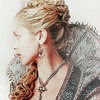-Lɪғᴇ ᴀᴛ Hᴏɢᴡᴀʀᴛs- (Bʀᴀɴᴅ ɴᴇᴡ - Aᴄᴄᴇᴘᴛɪɴɢ)
Forum rules
Remember, all content must remain child-friendly at all times!
Users breaking this rule by using foul language, roleplaying explicit sexual scenes, excessive violence/torture, non-consensual 'romance', or other adult themes may be banned.
Please remember to read all the rules stickied at the top of the board before participating in any roleplays.
Remember, all content must remain child-friendly at all times!
Users breaking this rule by using foul language, roleplaying explicit sexual scenes, excessive violence/torture, non-consensual 'romance', or other adult themes may be banned.
Please remember to read all the rules stickied at the top of the board before participating in any roleplays.
Re: -Lɪғᴇ ᴀᴛ Hᴏɢᴡᴀʀᴛs- (Bʀᴀɴᴅ ɴᴇᴡ - Aᴄᴄᴇᴘᴛɪɴɢ)
Raven-"WILLOW!"She yelled into the sky for the large bird.She saw the tattered looking bird fly and land on her solder."Gosh your heavy."She said shaking her head.To raven willow was her only friend besides the chief.She stroked the birds chest softly.Her darker grey ish blue eyes watched the bird fly off after a moment."Fine leave,leave like they all do."She said turning away and sitting on the ground.She sighed and looked into the sky."I wish it was dark,I feel so much comphertable."She said softly looking down.She yelped as something bit her leg.She smacked the creature and at let out a cry and ran off into the distance.It had been the size of a mouse."What the H*ll was that!!"She barked and looked at her leg.It was bleeding and stung."Gosh what am I a freaken pop tart!"She fussed to herself.She went to get up and relised her leg burnt even more.She went to walk and the weight under her leg left.She stumbled."What was thath thing?"She said trying to get up.She could not move her leg yet it stung and bled.She was in pain but her face was a emotionless as she could make it.She growled and mumbled to herself."And I dropped all of my stuff!"She said as she slowly moved,dragging her leg."It hurts,can't move this stupid thing."She said slowly getting to the door and opening it slowly.She turned her head and saw the trail of blood outside."Great I'm so Gona get killed for this."She said taking her robe and ripping the bottom part off.She rapped it around her badly bleeding leg.The blood seeped threw the cloak but did not leave a trail.Her face cringed as a zap of pain hit her leg.She held in a cry of pain and made her face emotionless.She slowly began to dragg herself to the infirmary.
-

BakaNek0Lord - Posts: 7214
- Joined: Sun Oct 30, 2011 6:09 am
- My pets
- My items
- My wishlist
- My gallery
- My scenes
- My dressups
- Trade with me
Re: -Lɪғᴇ ᴀᴛ Hᴏɢᴡᴀʀᴛs- (Bʀᴀɴᴅ ɴᴇᴡ - Aᴄᴄᴇᴘᴛɪɴɢ)
((Fair enough!  oh no, what's happened to raven? My last day of boarding today, and look out for my new character later when I get home.
oh no, what's happened to raven? My last day of boarding today, and look out for my new character later when I get home.  ))
))
"Oh but you must!" Maya began, feeling a little more confident as she really began to pity the poor girl. "Luca specifically asked me to not let you refuse, when I left he was looking a little upset, I thought it could have been- sorry? Look, I have absolutely no idea what has happened, but I know Luca, and I know he only means well, you should have seen his face when he dragged me away from my class, and he's skipping too you know, he really urgently needs to see you." Maya concluded, feeling rather triumphant as she hadn't expected to have that much to say. She watched the Bundle of blankets as she waited for a relpy.
"Oh but you must!" Maya began, feeling a little more confident as she really began to pity the poor girl. "Luca specifically asked me to not let you refuse, when I left he was looking a little upset, I thought it could have been- sorry? Look, I have absolutely no idea what has happened, but I know Luca, and I know he only means well, you should have seen his face when he dragged me away from my class, and he's skipping too you know, he really urgently needs to see you." Maya concluded, feeling rather triumphant as she hadn't expected to have that much to say. She watched the Bundle of blankets as she waited for a relpy.
-

Chrystopher - Posts: 1519
- Joined: Thu Mar 24, 2011 6:46 pm
- My pets
- My items
- My wishlist
- My gallery
- My scenes
- My dressups
- Trade with me
Re: -Lɪғᴇ ᴀᴛ Hᴏɢᴡᴀʀᴛs- (Bʀᴀɴᴅ ɴᴇᴡ - Aᴄᴄᴇᴘᴛɪɴɢ)
(a creature bit her.Ill just leave it at that for now.>:) Mwahahaha!And ok can't wait and boarding school...my mom is way to protective to even think about that.:3Lol when I went to Washington this summer for a jr.Youth leadership meeting she called me almost every hour.:3Lol it was really embarrassing though but I hope you had Atleast a little fun possibly.)
Raven-She face began to turn a almost ghostly white shade."uh I feel lightheaded."She said weakly her eyes seemed dazed.She dragged her parelized leg even farther.She felt dizzy and light headed.She was sweating and her face was very Pail.She started to stumble once more as she started to black out."Whymuustytheesehaeypentoyamea."She mumbled in half consensness.Her eyes rolled to the back of her head as she blacked out.She fell the the floor with a thump her body limp.Her face was flushed from any hint of color besides white
(MWAHAHAHAHAH EVIL!!Lol >:).
Raven-She face began to turn a almost ghostly white shade."uh I feel lightheaded."She said weakly her eyes seemed dazed.She dragged her parelized leg even farther.She felt dizzy and light headed.She was sweating and her face was very Pail.She started to stumble once more as she started to black out."Whymuustytheesehaeypentoyamea."She mumbled in half consensness.Her eyes rolled to the back of her head as she blacked out.She fell the the floor with a thump her body limp.Her face was flushed from any hint of color besides white
(MWAHAHAHAHAH EVIL!!Lol >:).
-

BakaNek0Lord - Posts: 7214
- Joined: Sun Oct 30, 2011 6:09 am
- My pets
- My items
- My wishlist
- My gallery
- My scenes
- My dressups
- Trade with me
Re: -Lɪғᴇ ᴀᴛ Hᴏɢᴡᴀʀᴛs- (Bʀᴀɴᴅ ɴᴇᴡ - Aᴄᴄᴇᴘᴛɪɴɢ)
((I almost feel sympathetic for Raven.
lol, Emily's probably gonna feel a lot better when she hears about Raven's bite.
Boarding school? *grimaces* Painful... I'd hate to go to boarding school! It's got the word 'bored' in it, afterall! Maybe not spelt the same, but... BORING!
On with post typing...))
lol, Emily's probably gonna feel a lot better when she hears about Raven's bite.
Boarding school? *grimaces* Painful... I'd hate to go to boarding school! It's got the word 'bored' in it, afterall! Maybe not spelt the same, but... BORING!
On with post typing...))










-

TᴀɪntᴇD CrᴇᴀtɪvɪtY - Posts: 1066
- Joined: Sun Jul 22, 2012 3:26 pm
- My pets
- My items
- My wishlist
- My gallery
- My scenes
- My dressups
- Trade with me
Re: -Lɪғᴇ ᴀᴛ Hᴏɢᴡᴀʀᴛs- (Bʀᴀɴᴅ ɴᴇᴡ - Aᴄᴄᴇᴘᴛɪɴɢ)
-Emily-
She is silent for a while longer. "Luca?" she asks. "He wants to see me?"
'But he laughed, along with the others,' she thought sadly to herself. 'What if he just wants me to go down so he can laugh at me some more. Even, tell others about it?"
She closed her eyes. The girl did sound sincere when she described how Luca had looked like, but Emily still wasn't sure. Yet, he was skipping class for her. That counted for something, right?
"What happened," Emily said. "Is that I turned blue." She pushed a hand out and away from the covers and showed it to her. After about five seconds of show, she pulled it back in and looked down at the light-blue pillow. It was very painful to think about. Because of her easy, too-trusting nature, blinded by long recieved hate, she had allowed someone to hurt her, even more than the others who physically and mentally at her home.
"We were in Charms, and we had to introduce ourselves. And... a girl called Raven offered me a rose of any colour I liked. I chose blue. She gave me the flower and it must've had some type of colour charm that could get into the blood and infect me. And, then I offered to go up. While I was trying to introduce myself using a charm, I turned blue; and everyone laughed... including Luca," she added the last two words with more pain in her voice than before.
"I'm too trusting," she said quietly to herself.
She kept the blankets up around her, waiting for the girl to reply. She hoped she wouldn't laugh. The other students glee still rung in her ears.
'But he laughed, along with the others,' she thought sadly to herself. 'What if he just wants me to go down so he can laugh at me some more. Even, tell others about it?"
She closed her eyes. The girl did sound sincere when she described how Luca had looked like, but Emily still wasn't sure. Yet, he was skipping class for her. That counted for something, right?
"What happened," Emily said. "Is that I turned blue." She pushed a hand out and away from the covers and showed it to her. After about five seconds of show, she pulled it back in and looked down at the light-blue pillow. It was very painful to think about. Because of her easy, too-trusting nature, blinded by long recieved hate, she had allowed someone to hurt her, even more than the others who physically and mentally at her home.
"We were in Charms, and we had to introduce ourselves. And... a girl called Raven offered me a rose of any colour I liked. I chose blue. She gave me the flower and it must've had some type of colour charm that could get into the blood and infect me. And, then I offered to go up. While I was trying to introduce myself using a charm, I turned blue; and everyone laughed... including Luca," she added the last two words with more pain in her voice than before.
"I'm too trusting," she said quietly to herself.
She kept the blankets up around her, waiting for the girl to reply. She hoped she wouldn't laugh. The other students glee still rung in her ears.
((Yep, only Emily still! Basically because she's the only one with anything going on right now. Kai and Stellar are just stuck in class learning stuff))










-

TᴀɪntᴇD CrᴇᴀtɪvɪtY - Posts: 1066
- Joined: Sun Jul 22, 2012 3:26 pm
- My pets
- My items
- My wishlist
- My gallery
- My scenes
- My dressups
- Trade with me
Re: -Lɪғᴇ ᴀᴛ Hᴏɢᴡᴀʀᴛs- (Bʀᴀɴᴅ ɴᴇᴡ - Aᴄᴄᴇᴘᴛɪɴɢ)
(ha lol I'm punishing her in my own little way.:3Lol)
Willow/Pet raven-The bird had sat in a tree after hearing a long tailed razor toothed Poisen zagnarf.It was a small mythical creature who's bite perilized it victim then caused it to become unconcench so it could eat its prey alive.The bite was extreamly deadly and killed most in the first several minutes.The bird knew raven had been bitten.After watching the girl drag herself inside the bird went to catch the predictory zagnarf.Ravens are one of the smartest birds proven by science by far smarter than owls,eagles,and most other birds.Willow flew into the air looking for the small creature who had attacked raven.The bird spotted its prey and swooped down for the kill.She killed the creature almost istaintly with her large claw like feet.She grasped the creature in her claws as she flew back to the castle.She layed the creature down on a ledge off the building side.She quickly flew to a window and pecked at it very hard making a loud and quite noticeable sound.She flapped her wings and squawked loudly to be seen.The large bird knew raven had been bit and could sence a change in her master.
Raven-She lay in the floor,unmoving.She was pail and was having a hard time breathing.Her bite hidden by her bloody and torn cape shred.Her face cringed in pain often and her body jerked.She was sweating heavily and muffled crys came out of her mouth.She was unconcench but she could feel all the pain.Her mind was in a black ness where she felt only the pain from her bite.Her mind not comprehending anything but the pain.
Willow/Pet raven-The bird had sat in a tree after hearing a long tailed razor toothed Poisen zagnarf.It was a small mythical creature who's bite perilized it victim then caused it to become unconcench so it could eat its prey alive.The bite was extreamly deadly and killed most in the first several minutes.The bird knew raven had been bitten.After watching the girl drag herself inside the bird went to catch the predictory zagnarf.Ravens are one of the smartest birds proven by science by far smarter than owls,eagles,and most other birds.Willow flew into the air looking for the small creature who had attacked raven.The bird spotted its prey and swooped down for the kill.She killed the creature almost istaintly with her large claw like feet.She grasped the creature in her claws as she flew back to the castle.She layed the creature down on a ledge off the building side.She quickly flew to a window and pecked at it very hard making a loud and quite noticeable sound.She flapped her wings and squawked loudly to be seen.The large bird knew raven had been bit and could sence a change in her master.
Raven-She lay in the floor,unmoving.She was pail and was having a hard time breathing.Her bite hidden by her bloody and torn cape shred.Her face cringed in pain often and her body jerked.She was sweating heavily and muffled crys came out of her mouth.She was unconcench but she could feel all the pain.Her mind was in a black ness where she felt only the pain from her bite.Her mind not comprehending anything but the pain.
-

BakaNek0Lord - Posts: 7214
- Joined: Sun Oct 30, 2011 6:09 am
- My pets
- My items
- My wishlist
- My gallery
- My scenes
- My dressups
- Trade with me
Re: -Lɪғᴇ ᴀᴛ Hᴏɢᴡᴀʀᴛs- (Bʀᴀɴᴅ ɴᴇᴡ - Aᴄᴄᴇᴘᴛɪɴɢ)
((Oh no! Not boarding school, although that'd be cool 
I meant snowboarding. Hehe, it was loads of fun, in the car on the way home at the moment.
Oh no! Seems like quite a dangerous animal to have wandering about the school ground!! Perhaps professor Quinn might have left a cage containing something dangerous unlocked again, I really should talk to her about that.
Lol maybe it's karma, watch out raven! At least shes got willow to look out for her.))
"Come on," Maya encouraged, getting a little frustrated but making an effort to sound very kind, this girl seemed awfully sensitive. "Ever think you're being a little hard on Luca? I've known him for a year now and if the same thing had happened to him he definitely would have laughed it off, maybe he thought you would do the same? Give the poor boy a chance, he so urgently asked me to do this, and he is going to a lot of effort to say sorry. Just give him a minute to talk to you himself, please?" she persuaded, getting a little edgy about missing so much class time, she was worried the note wouldn't cut it. Although, if Iglehart were to question it, Maya supposed she'd send him to Luca, he was a very smooth talker.
I meant snowboarding. Hehe, it was loads of fun, in the car on the way home at the moment.
Oh no! Seems like quite a dangerous animal to have wandering about the school ground!! Perhaps professor Quinn might have left a cage containing something dangerous unlocked again, I really should talk to her about that.
Lol maybe it's karma, watch out raven! At least shes got willow to look out for her.))
"Come on," Maya encouraged, getting a little frustrated but making an effort to sound very kind, this girl seemed awfully sensitive. "Ever think you're being a little hard on Luca? I've known him for a year now and if the same thing had happened to him he definitely would have laughed it off, maybe he thought you would do the same? Give the poor boy a chance, he so urgently asked me to do this, and he is going to a lot of effort to say sorry. Just give him a minute to talk to you himself, please?" she persuaded, getting a little edgy about missing so much class time, she was worried the note wouldn't cut it. Although, if Iglehart were to question it, Maya supposed she'd send him to Luca, he was a very smooth talker.
-

Chrystopher - Posts: 1519
- Joined: Thu Mar 24, 2011 6:46 pm
- My pets
- My items
- My wishlist
- My gallery
- My scenes
- My dressups
- Trade with me
Re: -Lɪғᴇ ᴀᴛ Hᴏɢᴡᴀʀᴛs- (Bʀᴀɴᴅ ɴᴇᴡ - Aᴄᴄᴇᴘᴛɪɴɢ)
(lol oh!!:3Yea well it's her punishment.Lol I'm eather Gona get some random person to find her or just do something.But willow will find a way to get someones attention.)
-

BakaNek0Lord - Posts: 7214
- Joined: Sun Oct 30, 2011 6:09 am
- My pets
- My items
- My wishlist
- My gallery
- My scenes
- My dressups
- Trade with me
Re: -Lɪғᴇ ᴀᴛ Hᴏɢᴡᴀʀᴛs- (Bʀᴀɴᴅ ɴᴇᴡ - Aᴄᴄᴇᴘᴛɪɴɢ)
((Oh! Snowboarding school would be AWESOME!
How could I have got that so mixed up? XD ))
How could I have got that so mixed up? XD ))
-Emily-
She stared down at the pillow for a long while, before finally dropping the blanket and slipping off the bed. "Give me a minute," she said, sounding resigned. "I need to make myself at least a little presentable. Even if it means coming out blue..."
She waited till the girl had left(I'm guessing she'd go down to tell Luca that Emily's coming) before going over to her make-up table and removing the running mascara before applying a fresh layer, along with a bit of eyeliner. She didn't bother with foundation or lipstick, considering she was blue and didn't feel like looking even more messed up.
She brushed her hair and straightened her robes and looked in the mirror, feeling a fresh wave of depression as she saw her blue lips and face. She tried her best to make her hair cover most of her face and tied a scarf around the bottom half of her face then checked again. The only thing showing now were her brown-eyes and a small amount of skin around them.
She opened the door and moved quickly downstairs, easily noticing Luca amung the small amount of people. They barely looked at her twice, for which she was thankful. She stood before him and waited for him to talk for a second then looked down at the floor, allowing her hair to come forward and completely cover her face.
Why did she feel like he was the only one she wanted to talk to, yet she wanted him as far away from her as possible? She kept asking herself why she felt two opposite ways over one boy. One boy who had asked her to come downstairs from her time trying to re-evaluate what she was going to do at Hogwarts. If he started laughing again, she would definitely run back upstairs and not come down again till at least she started turning back to normal.
She risked looking up once more then felt like she was making mistake and stared back at the ground, as ferociously as if she were trying to burn a hole right through it with her stare.
She waited till the girl had left(I'm guessing she'd go down to tell Luca that Emily's coming) before going over to her make-up table and removing the running mascara before applying a fresh layer, along with a bit of eyeliner. She didn't bother with foundation or lipstick, considering she was blue and didn't feel like looking even more messed up.
She brushed her hair and straightened her robes and looked in the mirror, feeling a fresh wave of depression as she saw her blue lips and face. She tried her best to make her hair cover most of her face and tied a scarf around the bottom half of her face then checked again. The only thing showing now were her brown-eyes and a small amount of skin around them.
She opened the door and moved quickly downstairs, easily noticing Luca amung the small amount of people. They barely looked at her twice, for which she was thankful. She stood before him and waited for him to talk for a second then looked down at the floor, allowing her hair to come forward and completely cover her face.
Why did she feel like he was the only one she wanted to talk to, yet she wanted him as far away from her as possible? She kept asking herself why she felt two opposite ways over one boy. One boy who had asked her to come downstairs from her time trying to re-evaluate what she was going to do at Hogwarts. If he started laughing again, she would definitely run back upstairs and not come down again till at least she started turning back to normal.
She risked looking up once more then felt like she was making mistake and stared back at the ground, as ferociously as if she were trying to burn a hole right through it with her stare.










-

TᴀɪntᴇD CrᴇᴀtɪvɪtY - Posts: 1066
- Joined: Sun Jul 22, 2012 3:26 pm
- My pets
- My items
- My wishlist
- My gallery
- My scenes
- My dressups
- Trade with me
Re: -Lɪғᴇ ᴀᴛ Hᴏɢᴡᴀʀᴛs- (Bʀᴀɴᴅ ɴᴇᴡ - Aᴄᴄᴇᴘᴛɪɴɢ)

~Usᴇʀɴᴀᴍᴇ~
Keriae
~Hᴏᴜsᴇ~
Ravenclaw
~Pᴇʀsᴏɴᴀʟɪᴛʏ~
Sophisticated and inquisitive she has a real passion for art and culture.
She prides herself on being in the know when it comes to the latest music and films and she always likes to have a good book on the go. She believes in immersing herself in interesting experiences that make her look at people, places and opportunities from new angles. Being sensitive and creative she wants to feel connected to the world around her and actively seeks out opportunities to explore it. It's all about broadening her horizons and living life to the full. Anything else would not fulfill her curious nature.
She's a true adventurer when it comes to all things cultural. She loves to be surprised and inspired.
She likes to keep things fresh, keeping up to the minute with what's going in the world has it's advantages. Whether it's the latest world news, Facebook gossip or knowing what Lady Gaga's wearing today, catching up on the blogosphere or chatting with your friends is one of life's little treats.
She's open-minded and a positive thinker so when she gets the chance to go traveling, she loves to head somewhere exotic and off
the beaten track. For her, escapism is the ultimate in relaxation - it's the perfect antidote to the stress of everyday life. She loves the feel of the sun and sea on her skin so her perfect vacation would definitely include a beach. Even better if it's secluded and luxurious.
When all is said and done, there's not denying that she have got a wonderfully childlike spirit. She sees beauty in the simplest of things. Happiness is not something to save for the future, it's about living in the moment.
~Hɪsᴛᴏʀʏ~
Nellie was born in France to her french mother - a witch - and American father - a muggle. Not long after she was born, they moved to Britain, where she has grown up. However, Nellie was born with a cleft lip and palate*, and at around seven months of age, she had an operation to repair her lip. This was followed up with another operation at around eighteen months to repair her palate. Many other operations followed.
In total, Nellie has had ten operations, from her first two because of her cleft, many to have teeth out, and an operation to place a "coil" in her heart because she was born with Patent Ductus Arterosis**. Finally, around a year ago, Nellie had a nose job.
Now she works harder than ever.



~Bʟᴏᴏᴅ~
Halfblood
~Nᴀᴛɪᴏɴᴀʟɪᴛʏ~
British
~Wᴀɴᴅ~
Spruce, with Phoenix feather core, twelve and a half inches, unyielding. It is a beautiful amber colour, spreaked with darker shades. Around the handle, traveling up along to the tip, are swirls of darker spruce, more brown in colour.
Unskilled wandmakers call spruce a difficult wood, but in doing so they reveal their own ineptitude. It is quite true that it requires particular deftness to work with spruce, which produces wands that are ill-matched with cautious or nervous natures, and become positively dangerous in fumbling fingers. The spruce wand requires a firm hand, because it often appears to have its own ideas about what magic it ought to be called upon to produce. However, when a spruce wand meets its match - which, in my experience, is a bold spell-caster with a good sense of humour - it becomes a superb helper, intensely loyal to their owners and capable of producing particularly flamboyant and dramatic effects.
The phoenix is a sacred creature born of earth and fire. Perhaps one of the most ancient of firebirds, the phoenix is also one of the most magical creatures, also thought to possess healing powers through its tears. The tail feather of a phoenix would be a wise choice for one who wishes to cast protection spells or lasting charms. It would make an excellent companion to woods that draw from the element of fire and water.
~Pᴀᴛʀᴏɴᴜs~
Domestic Cat
~Rᴇʟᴀᴛɪᴏɴsʜɪᴘ Sᴛᴀᴛᴜs~
Single
~Qᴜɪᴅᴅɪᴄʜ Pᴏsɪᴛɪᴏɴ~
N/A
~Pʀᴇғᴇᴄᴛ Pᴏsɪᴛɪᴏɴ~
N/A
~Fᴇᴀʀs~
Needles. Wasps. The cold. Sharp objects. She hates them all.
~Fʟᴀᴡs~
She isn't very creative in an artistic fashion - not at all. She can be rude and blunt, and sometimes doesn't know when to stop talking.
~Pᴇᴛ~
Nell debated for a long time over whether to get a gorgeous brown owl or to get a cat. Finally, realising that she didn't want an owl so soon after for old one, Demeter, died, she settled on a cat. In fact, it was a beautiful and slender tortoiseshell maine coon.
Like the majority of tortoiseshell cats, Holly is spunky and active. Like her breed, the Maine Coon, she is gentle and loving, and would do anything for her owner.

~Oᴛʜᴇʀ~
Nell is around five foot five inches and weighs seven stone four, exactly. She has an hourglass figure, but it isn't obvious and she doesn't flaunt it. Her feet are somewhere between a size three in some shoe brands and a size fives in others. Her hands are small with slender fingers and long nails which are most often painted silver or green. She has a slightly tanned complexion, clear of spots and smooth. Her eyes are a rich, soft chocolate brown, enhanced by long, thick eyelashes. Her hair is a golden dirty-blond that cascades down her back, ending midway down. She will mostly have it down, maybe pulled back by a hairband or even a bandana to keep it out of her face.
I was born with a cleft lip and palate, and with Patent Ductus Arterosis, which is why they are included in the form.
* wrote:Cleft lip (cheiloschisis) and cleft palate (palatoschisis), which can also occur together as cleft lip and palate, are variations of a type of clefting congenital deformity caused by abnormal facial development during gestation. A cleft is a fissure or opening—a gap. It is the non-fusion of the body's natural structures that form before birth. Approximately 1 in 700 children born have a cleft lip and/or a cleft palate. In decades past, the condition was sometimes referred to as harelip, based on the similarity to the cleft in the lip of a hare, but that term is now generally considered to be offensive.
A cleft lip or palate can be successfully treated with surgery, especially so if conducted soon after birth or in early childhood.
** wrote:Patent ductus arteriosus (PDA) is a congenital disorder in the heart wherein a neonate's ductus arteriosus fails to close after birth. Early symptoms are uncommon, but in the first year of life include increased work of breathing and poor weight gain. With age, the PDA may lead to congestive heart failure if left uncorrected. The ductus arteriosus is a normal fetal blood vessel that closes soon after birth. In a patent ductus arteriosus (PDA) the vessel does not close and remains "patent" resulting in irregular transmission of blood between two of the most important arteries close to the heart, the aorta and the pulmonary artery. PDA is common in neonates with persistent respiratory problems such as hypoxia, and has a high occurrence in premature children. In hypoxic newborns, too little oxygen reaches the lungs to produce sufficient levels of bradykinin and subsequent closing of the DA. Premature children are more likely to be hypoxic and thus have PDA because of their underdeveloped heart and lungs.
A patent ductus arteriosus allows a portion of the oxygenated blood from the left heart to flow back to the lungs by flowing from the aorta (which has higher pressure) to the pulmonary artery. If this shunt is substantial, the neonate becomes short of breath: the additional fluid returning to the lungs increases lung pressure to the point that the neonate has greater difficulty inflating the lungs. This uses more calories than normal and often interferes with feeding in infancy. This condition, as a constellation of findings, is called congestive heart failure.
In some cases, such as in transposition of the great vessels (the pulmonary artery and the aorta), a PDA may need to remain open. In this cardiovascular condition, the PDA is the only way that oxygenated blood can mix with deoxygenated blood. In these cases, prostaglandins are used to keep the patent ductus arteriosus open.
-

Keriae - Posts: 31349
- Joined: Sat Oct 04, 2008 6:41 pm
- My pets
- My items
- My wishlist
- My gallery
- My scenes
- My dressups
- Trade with me
Who is online
Users browsing this forum: Amazonbot [Bot] and 3 guests

















